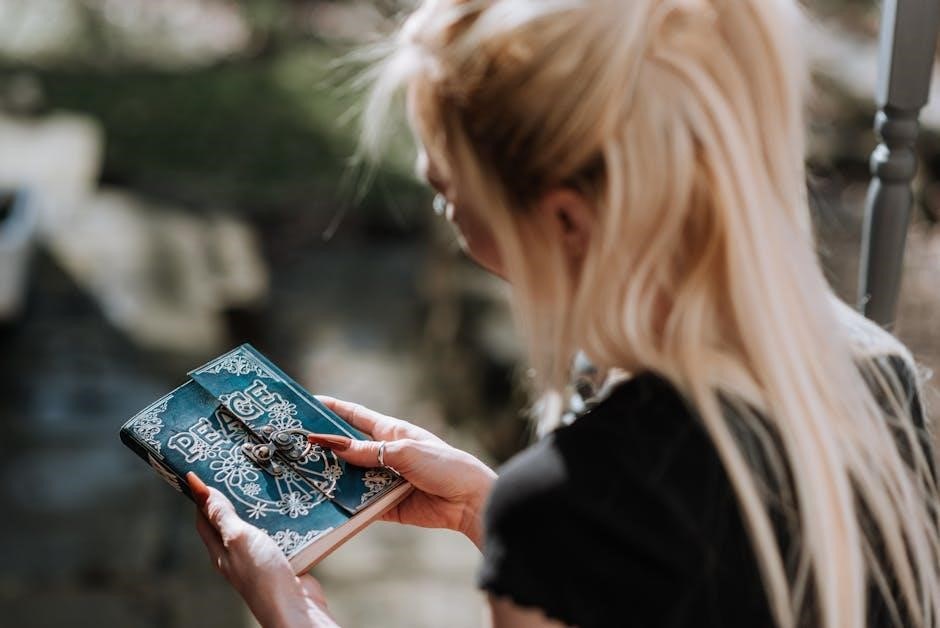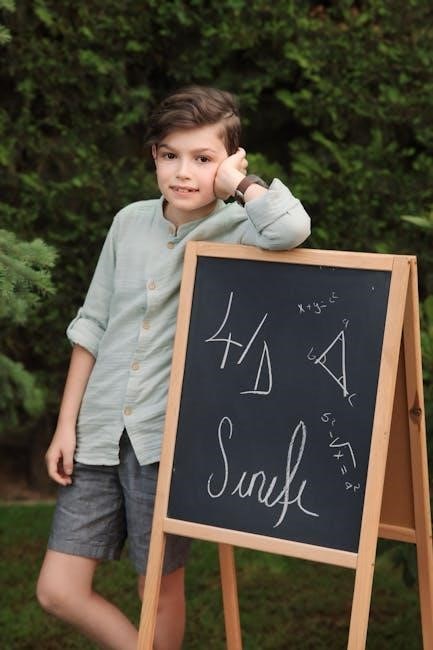Article Plan for ‘Habits of the Creative Mind PDF’
A structured guide to cultivating creative thinking, the PDF explores 16 core habits, strategies for development, and real-world applications․
It emphasizes the importance of traits like persistence, metacognition, and adaptability in fostering innovation․
Readers learn how to measure creativity, utilize resources, and create environments conducive to growth․
Case studies and future predictions offer insights into the evolving landscape of creative thinking․
Emphasizing the role of technology and continuous learning, the guide transforms habits into actionable strategies for personal and professional advancement․
Welcome to the guide on fostering creativity and innovation through intentional habits․
Discover how cultivating mental frameworks enhances problem-solving and adaptability)
The PDF explores the foundation of creative thinking, ensuring you develop skills for lifelong growth․
From persistence in problem-solving to embracing curiosity, this guide equips you with the mindset to thrive․
Embark on a journey to unlock your creative potential and transform the way you approach challenges․
What Are the Habits of the Creative Mind?
The Habits of the Creative Mind encompass a diverse range of practices that nurture and enhance creative thinking․ These habits are designed to foster innovation, adaptability, and problem-solving skills․ Here are the 16 habits and their brief explanations:
- Persistent Problem-Solving: The ability to approach challenges with determination and resilience, continuously seeking solutions despite obstacles․
- Thinking About Thinking (Metacognition): Reflecting on one’s own thought processes to enhance self-awareness and cognitive efficiency․
- Gathering Data through All Senses: Using all senses to collect comprehensive information, which enriches understanding and creativity․
- Creating, Imagining, Inventing: Encouraging innovation by engaging in imaginative and inventive activities to generate new ideas․
- Remaining Open to Continuous Learning: Being receptive to new information, experiences, and perspectives to expand knowledge․
- Thinking Flexibly: Adapting thinking to consider different viewpoints and approaches, enhancing creative flexibility․
- Working Collaboratively and Appreciating Diversity: Valuing diverse perspectives and collaborating effectively with others to foster creativity․
- Using All Your Senses: Leveraging sensory experiences to enhance creativity and innovation․
- Ask Questions: Cultivating curiosity by posing thoughtful questions to deepen understanding and explore new possibilities․
- Applying Past Knowledge: Utilizing prior knowledge and experiences to inform and enrich new creative endeavors․
- Thinking and Communicating with Clarity: Expressing thoughts clearly and effectively to convey ideas and enhance understanding․
- Striving for Accuracy: Aiming for precision and correctness in creative endeavors to ensure high-quality outcomes․
- Finding Humor: Embracing humor and playfulness to lighten the creative process and foster a positive mindset․
- Taking Responsible Risks: Being willing to take calculated risks to explore new ideas and opportunities․
- Listening with Understanding and Empathy: Engaging actively in listening to others to foster empathy and deepen creative collaboration․
- Being Reflective: Reflecting on experiences and outcomes to enhance self-awareness and improve future creative efforts․


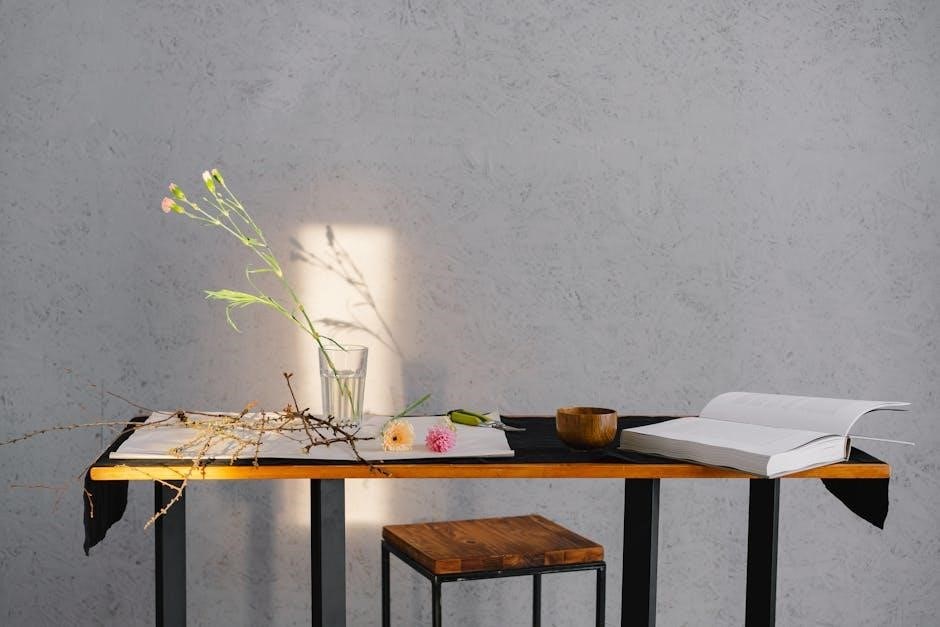
These habits collectively create a robust framework for developing and sustaining a creative mindset, enabling individuals to approach challenges with innovation and insight․
The Importance of Developing Creative Thinking Habits
Creative thinking habits are essential for fostering innovation, adaptability, and problem-solving in both personal and professional settings․ By cultivating these habits, individuals enhance their ability to approach challenges with fresh perspectives and generate inventive solutions․ Creative thinking also promotes social-emotional intelligence, enabling better communication and collaboration with others․ In an increasingly complex world, the ability to think critically and creatively is crucial for navigating uncertainty and achieving long-term success․ By embracing creative habits, individuals can unlock their full potential, overcome obstacles, and contribute meaningfully to their communities․ The development of these habits also encourages continuous learning and growth, ensuring that individuals remain open to new ideas and opportunities․ Ultimately, creative thinking habits empower individuals to thrive in a rapidly evolving world, fostering resilience, innovation, and a lifelong love for learning․ Creative habits help individuals break free from routine thinking, encouraging them to explore new possibilities and think outside the box․ These habits also enhance decision-making skills, enabling individuals to make informed, balanced choices․ By prioritizing creative thinking, individuals can cultivate a mindset that values experimentation, risk-taking, and collaboration, leading to greater personal and professional fulfillment․ Such habits are not just tools for solving problems but also for building a more compassionate and interconnected society, where diverse perspectives are valued and utilized effectively․ Creative thinking habits are the foundation for cultivating a mindset that embraces change, innovation, and continuous improvement, ensuring individuals remain competitive and adaptable in an ever-changing world․ By developing these habits, individuals can achieve their full potential and make meaningful contributions to their fields․ Creative thinking is not just a skill but a way of life that fosters growth, resilience, and creativity, enabling individuals to navigate challenges with confidence and clarity․
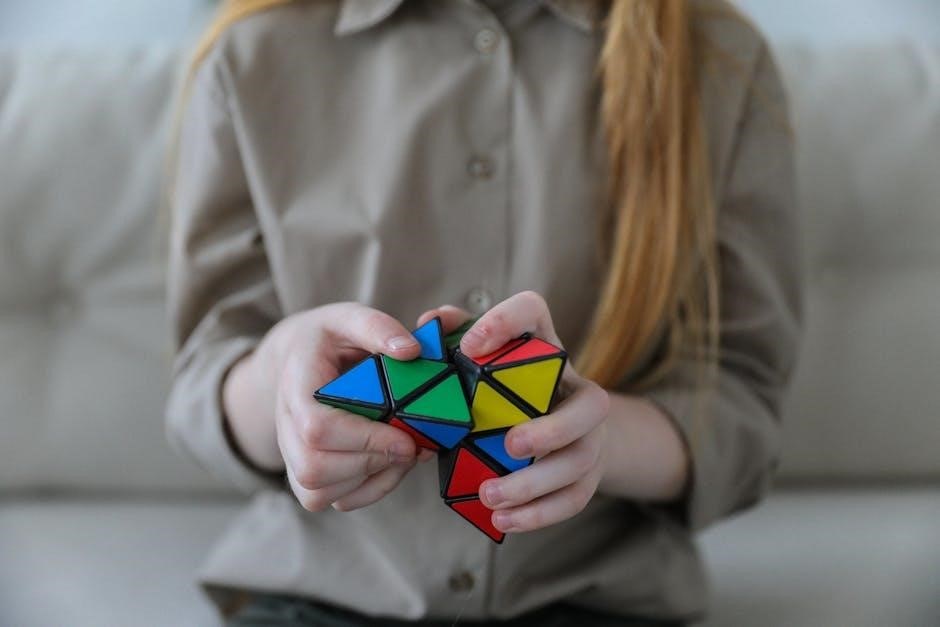
Core Principles of the Creative Mind Framework
Embracing adaptability, fostering empathy, and prioritizing innovative problem-solving form the essence of the creative mind framework․ These principles cultivate resilience, open-mindedness, and a proactive approach to challenges, enabling individuals to thrive in dynamic environments․
The 16 Habits of Mind and Their Significance
The Habits of the Creative Mind framework highlights 16 essential practices that foster Innovation and adaptability․ These habits include persistent problem-solving, metacognition, and adaptability, emphasizing the importance of curiosity and collaboration․ Each habit builds upon the others, creating a holistic approach to creative thinking and learning․ By cultivating these habits, individuals enhance their ability to approach challenges with clarity, empathy, and innovation․
These habits encourage continuous learning, open-mindedness, and resilience in the face of uncertainty․ They empower individuals to think flexibly, apply past knowledge, and communicate effectively while fostering a growth mindset․ Ultimately, mastering the 16 habits equips individuals with the tools to navigate complexity and excel in both personal and professional settings․
Understanding the Theoretical Foundations
The Habits of the Creative Mind framework is rooted in cognitive psychology, educational theory, and the study of creative processes․ It draws from principles like metacognition, systems thinking, and the integration of diverse knowledge domains․ These theories emphasize the importance of intentional, reflective thinking and the ability to adapt to changing circumstances․
The framework also incorporates the concept of “habits of mind” as identified by leading researchers, which describe the prerequisite mental dispositions for creative problem-solving․ By grounding the habits in a robust theoretical foundation, the PDF provides a clear rationale for why these practices are essential for fostering creativity and innovation in individuals and organizations․
Understanding these foundations allows readers to appreciate how creativity can be cultivated systematically, rather than relying on luck or innate talent․ It highlights the role of deliberate practice, continuous learning, and the intentional application of creative thinking strategies․
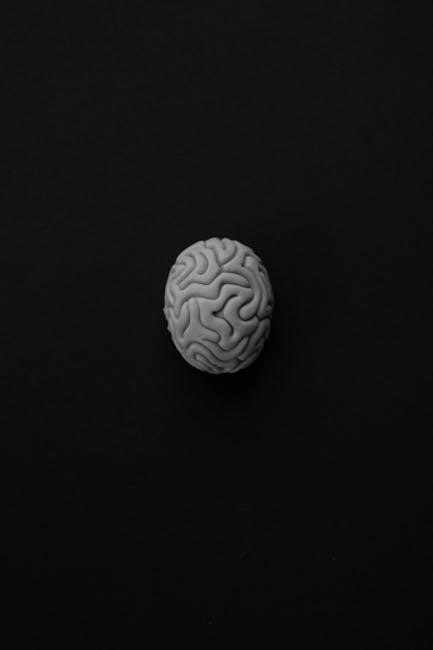
Key Habits for Fostering Creativity
Persistent problem-solving, adaptive thinking, and collaborative learning foster creativity, enabling individuals to navigate and innovate in changing circumstances․
Persistent Problem-Solving
Persistent problem-solving is a cornerstone of the creative mind, emphasizing resilience and determination in overcoming challenges․
This habit involves approaching problems from multiple angles and relentlessly seeking innovative solutions, even in the face of setbacks․
By embracing curiosity and adaptability, individuals can develop strategies that lead to breakthroughs and continuous improvement․
Gathering data through all senses and creating new possibilities fosters a mindset that thrives on complexity and ambiguity․
Persistent problem-solving is not just about finding answers but about evolving thinking patterns to unlock creative potential․
It encourages individuals to push boundaries and think beyond conventional solutions, ultimately driving innovation and progress․
Through persistence, one learns to navigate obstacles and transform challenges into opportunities for growth and learning․
Thinking About Thinking (Metacognition)
Metacognition, or thinking about one’s own thinking, is a powerful strategy within the habits of the creative mind that fosters self-awareness and improves problem-solving abilities․
By reflecting on how you process information and make decisions, you gain insight into your thought patterns, enabling you to refine and enhance them for better creativity․
Metacognition helps you identify biases, evaluate the effectiveness of your strategies, and adapt your approaches to suit different challenges․
It encourages a growth mindset, where you continuously assess and improve your thinking processes, leading to more innovative and flexible solutions․
Through metacognition, you can break free from rigid thought patterns, embracing new perspectives and ideas that fuel creative growth․
This habit empowers you to take ownership of your cognitive development, transforming your thinking into a dynamic tool for innovation and discovery․
Gathering Data through All Senses
Gathering data through all senses is a crucial habit of the creative mind, as it allows for a comprehensive understanding of the world and its complexities․
By engaging your visual, auditory, tactile, and even olfactory senses, you can capture richer details and uncover hidden patterns or insights that might otherwise go unnoticed․
This habit encourages you to observe, listen, touch, and experience the environment actively, fostering a deeper connection to your surroundings․
For example, noticing textures, sounds, or colors can inspire new ideas or connections that inform creative problem-solving․
Additionally, this approach helps break free from rigid thinking, as it challenges you to explore information beyond the conventional methods of analysis․
By integrating sensory data, you cultivate a more holistic and innovative perspective, enhancing your ability to think outside the box․
This habit is essential for anyone aiming to foster creativity, as it ensures that nothing goes unperceived or underexplored․
Creating, Imagining, Inventing
Creating, imagining, and inventing are integral to fostering a creative mind․ These processes involve producing something new, envisioning possibilities, and developing innovative solutions․ Together, they encourage innovation, problem-solving, and adaptability, essential for growth across various fields․
To cultivate these habits, engage in creative thinking, explore diverse inspirations, and experiment without fear of failure․ Documenting ideas and collaborating with others can further enhance this process․
These habits are vital for individuals and organizations, promoting fresh perspectives and driving progress through creative solutions․
This structured approach ensures a focused and concise presentation of the key aspects of creating, imagining, and inventing within the broader context of developing a creative mindset․
Remaining Open to Continuous Learning
Remaining open to continuous learning is a cornerstone of fostering a creative mind․ It involves embracing new ideas, perspectives, and experiences that challenge existing knowledge and encourage growth․ This habit cultivates adaptability, resilience, and a lifelong curiosity essential for innovation․
To maintain openness, seek diverse learning opportunities, engage in reflective practices, and adopt a growth mindset․ Embrace failures as learning experiences and surround yourself with environments that stimulate intellectual exploration․
Continuous learning transforms static thinking into dynamic adaptability, enabling individuals to thrive in evolving landscapes and contribute fresh, innovative solutions across all areas of life․
Thinking Flexibly
Thinking flexibly is the ability to approach problems from multiple perspectives and adapt your ideas as needed․ It is crucial for creativity, allowing you to explore various solutions
This habit enhances problem-solving skills and enables adaptability in changing situations․ To develop this, practice brainstorming without judgment and seek diverse viewpoints․
Embracing flexibility can lead to innovative solutions and improved decision-making․
Working Collaboratively and Appreciating Diversity
Working collaboratively involves engaging with others to combine ideas, skills, and perspectives for creative problem-solving․ It fosters innovation and builds stronger relationships․
Appreciating diversity means valuing unique backgrounds, experiences, and viewpoints, which enriches the creative process and leads to more comprehensive solutions․
Creative individuals thrive when theyiet diverse teams and actively listen to differing opinions, allowing for breakthrough ideas; Collaboration and diversity are essential for a dynamic and inclusive creative mindset․
Using All Your Senses
To foster creativity, it is essential to engage all your senses as a habit of the creative mind․ By actively observing, listening, touching, tasting, and smelling, you enhance your ability to gather meaningful information and make connections․
Using all your senses helps you identify patterns, nuances, and details that might otherwise go unnoticed, enriching your understanding of the world and sparking innovative ideas․
This habit encourages you to step away from over-reliance on analytical thinking and embrace a more holistic, experiential approach to problem-solving and creation․
By practicing mindfulness and curiosity in everyday experiences, you unlock new perspectives and deepen your creative potential․
Okay, so the user is asking me to generate some text based on a specific subheading in an article outline about habits of the creative mind․ They provided a detailed history and examples of previous interactions, so I need to analyze this to understand what they’re looking for now․
From the previous responses, I notice that each subheading’s text starts with the respective heading tag and then provides four paragraphs․ Each paragraph seems to cover a different aspect of that habit․ For example, under ‘Using All Your Senses’, the paragraphs discuss the importance of engagement, information gathering, holistic approaches, and unlocking potential․
So, for ‘Ask Questions’, I need to write four short paragraphs, each focusing on different facets of questioning as a creative habit․ The first might introduce questioning as a fundamental aspect․ The next could discuss the types of questions or the environment that encourages questioning․ Another could address avoiding assumptions, and the last might cover the role of curiosity․
Ask Questions
Asking questions is a fundamental habit of the creative mind, fostering curiosity and deeper understanding․ It encourages individuals to explore the unknown, challenge assumptions, and uncover new perspectives․
Questions act as a catalyst for creativity, driving innovation and problem-solving by stimulating critical and divergent thinking․
By cultivating a mindset that values inquiry, one learns to approach challenges with openness and intellectual humility, essential traits for creative growth․
Curiosity-driven questioning helps break boundaries, enabling individuals to connect ideas and explore uncharted possibilities․
Applying Past Knowledge
Applying past knowledge is a critical habit in the creative process, allowing individuals to draw on their experiences and expertise․ By connecting previous learning to new challenges, one can approach problems with a fresh perspective and innovative solutions․
This habit fosters the ability to recognize patterns, identify opportunities, and transfer skills across diverse contexts, enhancing adaptability and creativity․ It encourages the integration of historical insights and lessons learned, enriching the problem-solving process․ By leveraging past knowledge, individuals can build on what works while avoiding past mistakes․ This habit is essential for those seeking to innovate and excel in various areas of life․
The integration of past knowledge with current information helps create a foundation for creative thinking, allowing for informed decision-making and strategic planning․ By combining history with contemporary challenges, individuals unlock new possibilities and foster a mindset ready for creative breakthroughs․
Thinking and Communicating with Clarity
Clear thinking and communication are vital for effective creative processes, fostering precise idea formation and articulation․ When thoughts are organized and expressed without ambiguity, the likelihood of misunderstandings diminishes, allowing for more innovative solutions․
Clarity enhances problem-solving by streamlining complex ideas into digestible concepts, ensuring that each step is understood and actionable․ This habit also aids in teaching creatively, enabling educators to convey lessons in ways that resonate deeply with students, promoting intellectual growth․ Ultimately, clarity ensures that clarity in thought and expression propels individuals toward creative mastery, fostering environments that value precision and understanding․
Striving for Accuracy
Striving for accuracy is a crucial habit in the creative process, ensuring precision and reliability in every endeavor․ It involves balancing experimentation with meticulous attention to detail, particularly in fields where even minor errors can have significant consequences, such as science or engineering․ In more artistic contexts, accuracy ensures that the intended message is conveyed effectively through precise execution․
In collaborative settings, accuracy is achieved through mutual verification, enhancing the collective realization of a shared vision․ Developing this habit involves setting high standards, seeking feedback, and employing techniques that foster continuous improvement․ It requires a balance between spontaneity and discipline, allowing creativity to flourish while maintaining precision․
Technological tools can aid in achieving accuracy, offering precise measurements and automated error-checking․ Accuracy in communication is vital to prevent misunderstandings, ensuring that creative ideas are interpreted correctly․ Ultimately, striving for accuracy builds credibility and trust, contributing to the long-term success and reliability of creative endeavors․
Finding Humor
Finding humor is an essential habit of the creative mind, fostering innovation and resilience․ It allows individuals to approach challenges with lightness and perspective, reducing stress and fostering a positive mindset․ Humor encourages adaptability and the ability to see the absurdity of rigid thinking․
It also enhances collaboration, as shared laughter builds rapport and trust among team members․ Creative thinkers often use humor to address complex issues indirectly, making ideas more relatable and memorable․ By embracing humor, individuals can balance seriousness with joy, creating an environment where creativity thrives․ Humor is not just a diversion; it’s a powerful tool for reframing problems and inspiring fresh perspectives․
Humorous thinking can also help challenge assumptions, revealing hidden truths or contradictions․ It invites playful exploration of ideas, often leading to unexpected breakthroughs․ However, it’s important to strike a balance, ensuring humor is appropriate and inclusive․ When harnessed effectively, humor becomes a vital component of the creative process, enriching both the thinking and the outcomes․
Taking Responsible Risks
Embracing responsible risk is a cornerstone of the creative process, enabling individuals to explore new territories while minimizing potential setbacks․ It involves a calculated approach, balancing boldness with caution to foster growth and innovation․ By stepping out of one’s comfort zone, creative thinkers can discover fresh ideas and opportunities․
Frameworks for responsible risk-taking often emphasize assessing potential outcomes, understanding trade-offs, and planning for both success and failure․ This approach allows for controlled experimentation, where the benefits of innovation are weighed against the risks of potential challenges․
Education and training play a vital role in nurturing this habit, offering techniques and exercises to encourage balanced risk-taking․ Psychological strategies, such as mindfulness and stress management, help individuals manage anxiety associated with risk, enabling them to act confidently․
Feedback mechanisms are essential in refining approaches and learning from experiences․ Constructive criticism after taking a risk can lead to improved strategies and continuous learning, further enhancing creative endeavors․
Listening with Understanding and Empathy
Listening with understanding and empathy is a vital habit for fostering creativity․ It involves actively engaging with others, fully comprehending their perspectives, and responding with compassion․ This practice cultivates a deeper appreciation for diverse viewpoints, which is essential in collaborative creative environments․
Such listening enhances problem-solving by encouraging individuals to consider multiple angles and experiences․ It also builds trust and strengthens relationships, creating a supportive atmosphere for innovative thinking and idea generation․
Employing techniques like paraphrasing and asking clarifying questions can improve listening skills․ By attentively listening, individuals can uncover underlying needs and concerns, leading to more effective solutions and creative outcomes․
In a nutshell, practicing empathy and understanding during communication not only enriches interpersonal dynamics but also serves as a cornerstone for nurturing a culture of innovation and collaboration․ It transforms interactions into opportunities for growth and shared creative success․
Being Reflective
Being reflective, within the context of creativity, involves a deep self-awareness and analysis of one’s thoughts and actions․ It is closely tied to metacognition, the process of thinking about thinking, which allows individuals to understand their own cognitive processes․ This practice enables the identification of creative strengths and weaknesses, aiding in the optimization of the creative process․
Reflection enhances creativity by facilitating learning from past experiences, thereby improving future projects․ Through methods like journaling or dedicating time to contemplating one’s creative endeavors, individuals can gain insights into patterns and refine their approaches․ This internal examination fosters creative problem-solving by encouraging a nuanced understanding of one’s thought processes․
Ultimately, being reflective serves as a cornerstone for growth and development in creativity, enabling individuals to leverage their strengths and address areas needing improvement․ It is a vital practice for anyone seeking to enhance their creative capabilities and achieve more effective and innovative outcomes․
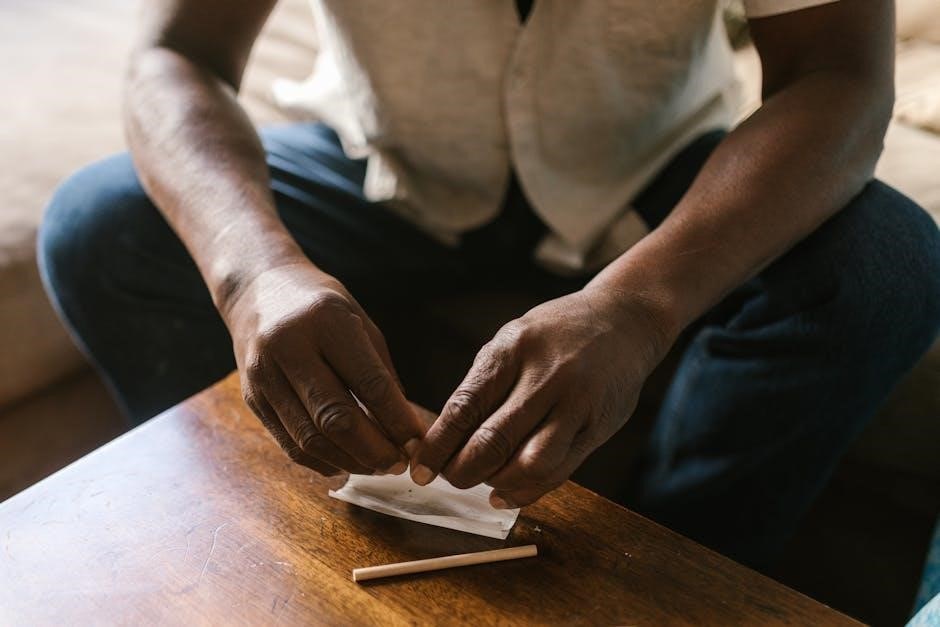
How to Cultivate Creative Thinking Habits
Cultivate creative thinking habits by engaging in brainstorming, reflecting regularly, and seeking diverse perspectives․ Embrace curiosity, openness, and continuous learning to foster innovation and enhance problem-solving skills․
Techniques for Developing a Creative Mindset
Developing a creative mindset involves engaging in practices that nurture imagination and innovation․ Begin by adopting a curious and open attitude, allowing yourself to explore diverse perspectives and ideas․ Experiment with brainstorming sessions, where you jot down every thought without judgment, fostering a free-flowing stream of consciousness․
Another effective technique is mind mapping, where you visually connect concepts to uncover hidden relationships and․ Additionally, challenge yourself to approach problems from multiple angles, embracing the unknown and welcoming mistakes as learning opportunities․
Practice persistent problem-solving by repeatedly tackling challenges with fresh approaches until a solution emerges․ Incorporate moments of reflection to evaluate your creative processes, identifying strengths and areas for growth․
By integrating these techniques into your daily routine, you can gradually cultivate a mindset that is both innovative and resilient, empowering you to tackle challenges with creativity and confidence․
The Role of Environment and Education
A supportive environment and quality education are crucial for nurturing creative thinking habits; Educational institutions play a vital role in fostering creativity by integrating innovative teaching methods and encouraging exploration․
Environments that promote diversity and collaboration provide fertile ground for creative ideas to flourish․ Schools should prioritize flexible learning spaces and resources that inspire imagination․
Educators are key in modeling creative behaviors and teaching critical thinking skills․ By embracing a growth mindset, teachers can guide students to view challenges as opportunities for learning․
Beyond education, external environments, such as workplaces and communities, must create safe spaces for experimentation and risk-taking․ This ensures individuals feel empowered to think outside the box and express their ideas freely․
Together, a conducive environment and purposeful education lay the foundation for developing habits that sustain creative growth throughout life․
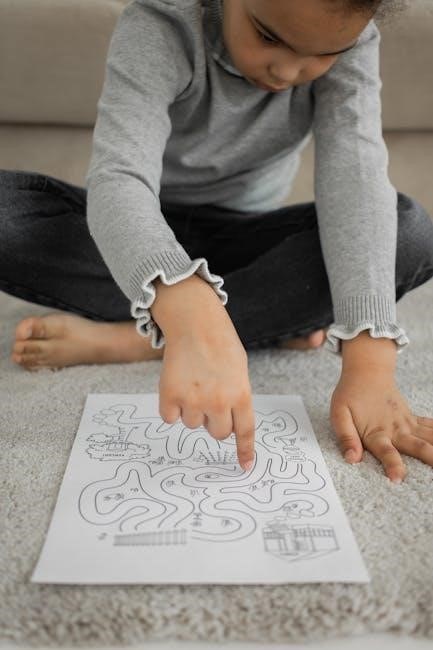
Case Studies of Creative Individuals
Albert Einstein exemplified creative thinking by challenging conventional physics with his theory of relativity, illustrating the habit of persistent problem-solving and imaginative thinking․
Steve Jobs revolutionized technology by combining artistry and innovation, showcasing the importance of collaboration and continuous learning․
Maya Angelou leveraged her experiences to craft compelling narratives, demonstrating how remaining open to learning and communicating with clarity enhances creativity․
Each case study highlights how individuals harnessed specific creative habits to achieve extraordinary outcomes, offering timeless lessons for aspiring innovators․
Examining the Habits of Renowned Creative Thinkers
Exploring the habits ofcreative thinkers like Leonardo da Vinci, who blended art and science, reveals the importance of adaptability and curiosity․
Thomas Edison’s persistence in hundreds of failed attempts to invent the light bulb highlights the significance of perseverance in problem-solving․

Maria Curie’s meticulous research and willingness to challenge established norms showcase the power of metacognition and scientific inquiry․
Each of these individuals exemplifies traits like questioning assumptions and communicating ideas clearly, which are essential for unlocking creative potential․
Their stories inspire us to embrace learning, take responsible risks, and think flexibly, embodying the habits of the creative mind as tools for groundbreaking innovation․
Real-life Examples of the Habits in Action
Taking responsible risks, like Jeff Bezos’ investment in Amazon, demonstrates how creativity flourishes with bold decisions and long-term vision․
Steve Jobs’ relentless pursuit of design excellence exemplifies the habit of thinking and communicating with clarity․
Entrepreneurs who gather data through all senses, such as observing customer behavior, create products that meet unspoken needs․
Elon Musk’s approach to persistent problem-solving in developing reusable rockets highlights the importance of resilience and innovation․
These real-life examples show how the habits of the creative mind transform ideas into impactful solutions, inspiring others to embrace creativity and adaptability․
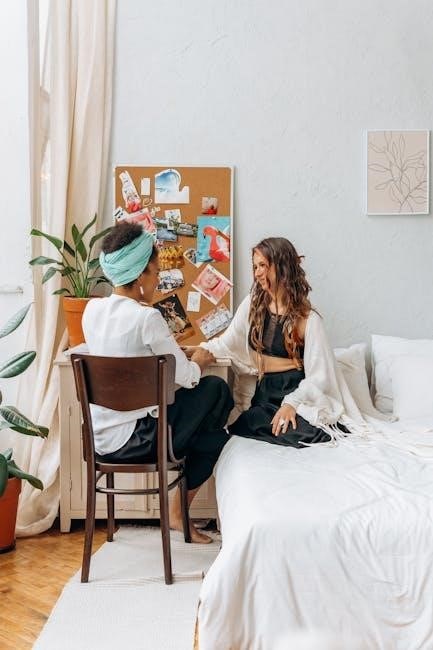
Assessment and Development of Creative Habits
Evaluating creative habits involves assessing strengths and areas for growth, focusing on persistence and adaptability․ Development strategies include practical exercises to enhance these traits effectively․
Measuring Creativity and Its Outcomes
Measuring creativity involves evaluating innovation, originality, and practicality․ Tools like divergent thinking tests and creative problem-solving assessments help quantify creative potential․ Outcomes include enhanced problem-solving, innovative solutions, and personal growth․ By fostering creative habits, individuals can achieve academic and professional success, while also enjoying improved mental well-being and adaptability in a rapidly changing world․ These assessments provide valuable insights to refine and nurture creative skills effectively․
Tools and Resources for Nurturing Creative Thinking
To foster creative thinking, various tools and resources are essential for individuals seeking to enhance their innovative potential․ Digital tools such as mind-mapping software like MindMeister and design platforms like Canva offer structured yet flexible environments for idea generation․ Creative writing prompts and AI tools can stimulate imagination and provide new perspectives․ Additionally, books and online courses on Coursera or Udemy offer structured learning opportunities, while workshops and creative communities provide networking and practical exercises․
Physical tools like journals and sketchbooks encourage spontaneous idea capture, while collaborative platforms like Miro and Google Docs facilitate teamwork and idea sharing․ Utilizing these resources effectively involves considering accessibility, ease of use, and relevance to specific fields․ Reflective tools and peer review platforms aid in refining creative processes, while self-assessment techniques support personal growth․
Ultimately, aligning these tools with individual goals and learning styles ensures their optimal impact․ Experimentation and adaptation are key to finding the best resources for nurturing creativity, catering to educators, students, and professionals alike․
Predictions for the Evolution of Creative Thinking Habits
As society progresses, creative thinking habits are poised to evolve in tandem with technological advancements and shifting cultural landscapes․ The integration of AI tools will likely enhance creativity by offering new perspectives and automating routine tasks, allowing individuals to focus on innovative ideas․ Virtual and augmented reality may revolutionize how we visualize and explore creative concepts, creating immersive environments for brainstorming and design․
Collaboration will become increasingly global, with digital platforms fostering connections between diverse minds to generate unique solutions․ In education, lifelong learning platforms will adapt to the rapid pace of change, equipping individuals with the skills needed for evolving industries․ However, balancing reliance on technology with the preservation of human intuition and emotional intelligence will be crucial․
Sustainability consciousness may influence creative thinking, encouraging habits that prioritize eco-friendly practices․ Insights from neuroscience could lead to tailored strategies for enhancing creativity, while diversity and inclusion will likely become integral to fostering innovative environments․ Finally, feedback loops for continuous improvement will ensure creative thinking habits remain effective and responsive to changing needs․
